When the first modern hybrid vehicles were launched, fears abounded over battery pack longevity. These largely turned out to be unfounded, with battery packs generally lasting for the life of a vehicle. However, do you know what doesn’t always last for the life of a vehicle? Anything attached to the underbody vulnerable to corrosion, and owners of certain late-model Toyota and Lexus crossovers have reported suffering from it greatly. It’s a problem so widespread, there’s even a name for it: CableGate.
When Toyota rolled out its fifth-generation 2.5-liter hybrid powertrain in the RAV4, Highlander, Venza, Sienna, and Lexus NX, it unlocked a bit of a cheat code. This range of hybrid crossovers offers huge practicality and impressive fuel economy, the sort of desirable have-your-cake-and-eat-it-too situation that saw consumers absolutely flock to the electrified models to the point where waiting lists could stretch on for months. It seemed like the perfect setup, but only a few winters were needed to discover problems in earlier examples.
Basically, this powertrain uses cables with braided ends to connect the high-voltage battery pack with components like the available rear electric motor. This isn’t a particularly uncommon design, but not only are the cables fairly exposed, the plastic connector boots were originally designed in a way that seems prone to moisture ingress. Over time and especially in locales where authorities salt the roads, moisture can corrode both the braided harness and the crimping rings that keep everything together, potentially resulting in hybrid system faults and expensive repair bills. Toyota officially refers to this problem as “excessive corrosion to the wire harness connections at the Rear Motor Generator,” and hearing the words “excessive corrosion” used to describe anything on a late-model car is a bit shocking to say the least.
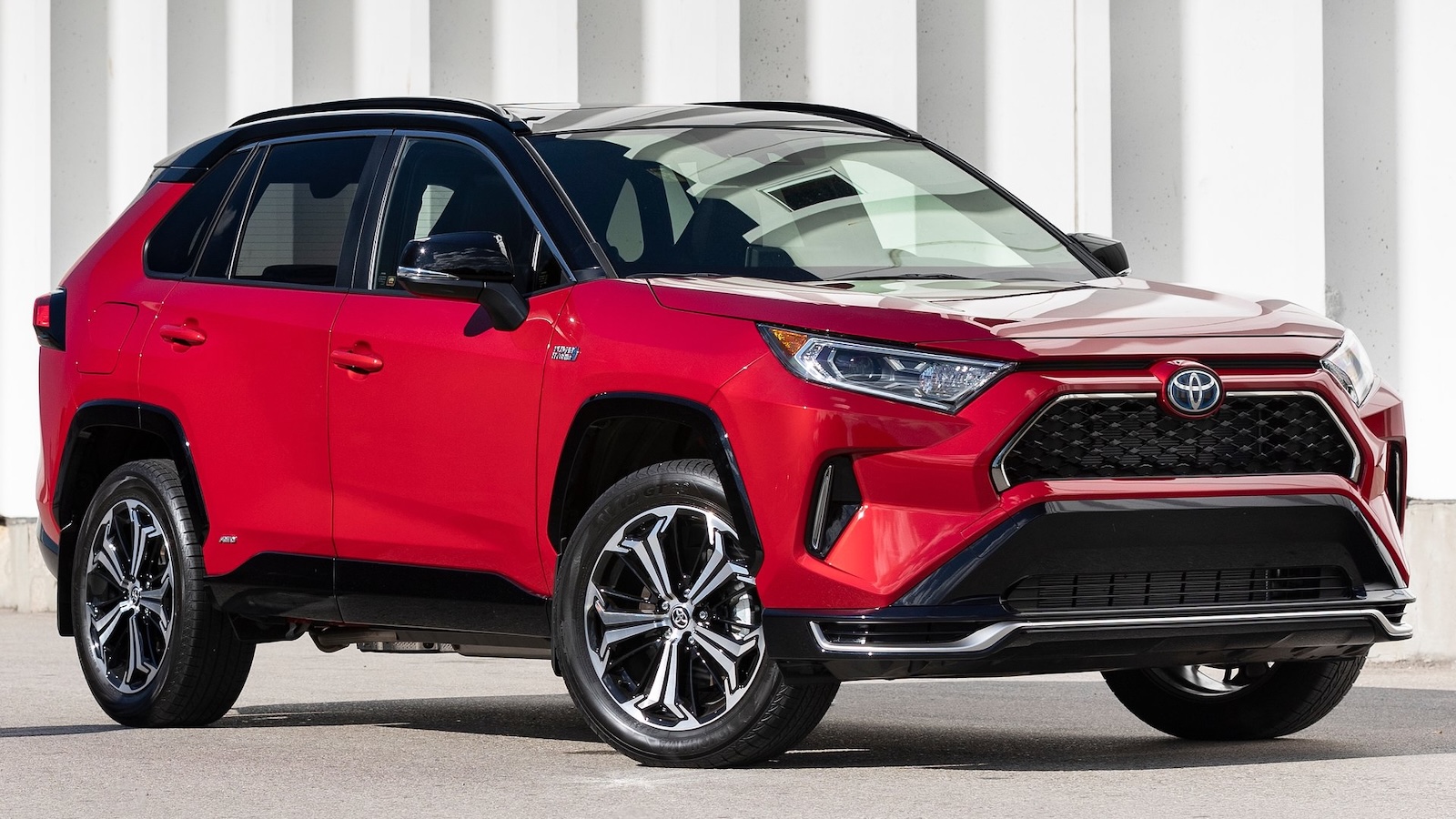
Toyota likely knew that its cable design could use improvement, because the automaker updated its cable connector accessories three times from the initial design between 2019 and 2024. A drain hole was added in 2021, a foam gasket was added at some point in 2023, and the whole cable end was finally sheathed in rubber starting in March of 2024. Unsurprisingly, the drain hole didn’t do much, and there isn’t a ton of real-world high-mileage salt belt data to judge the actual efficacy of the foam gasket with no rubber sheathing.
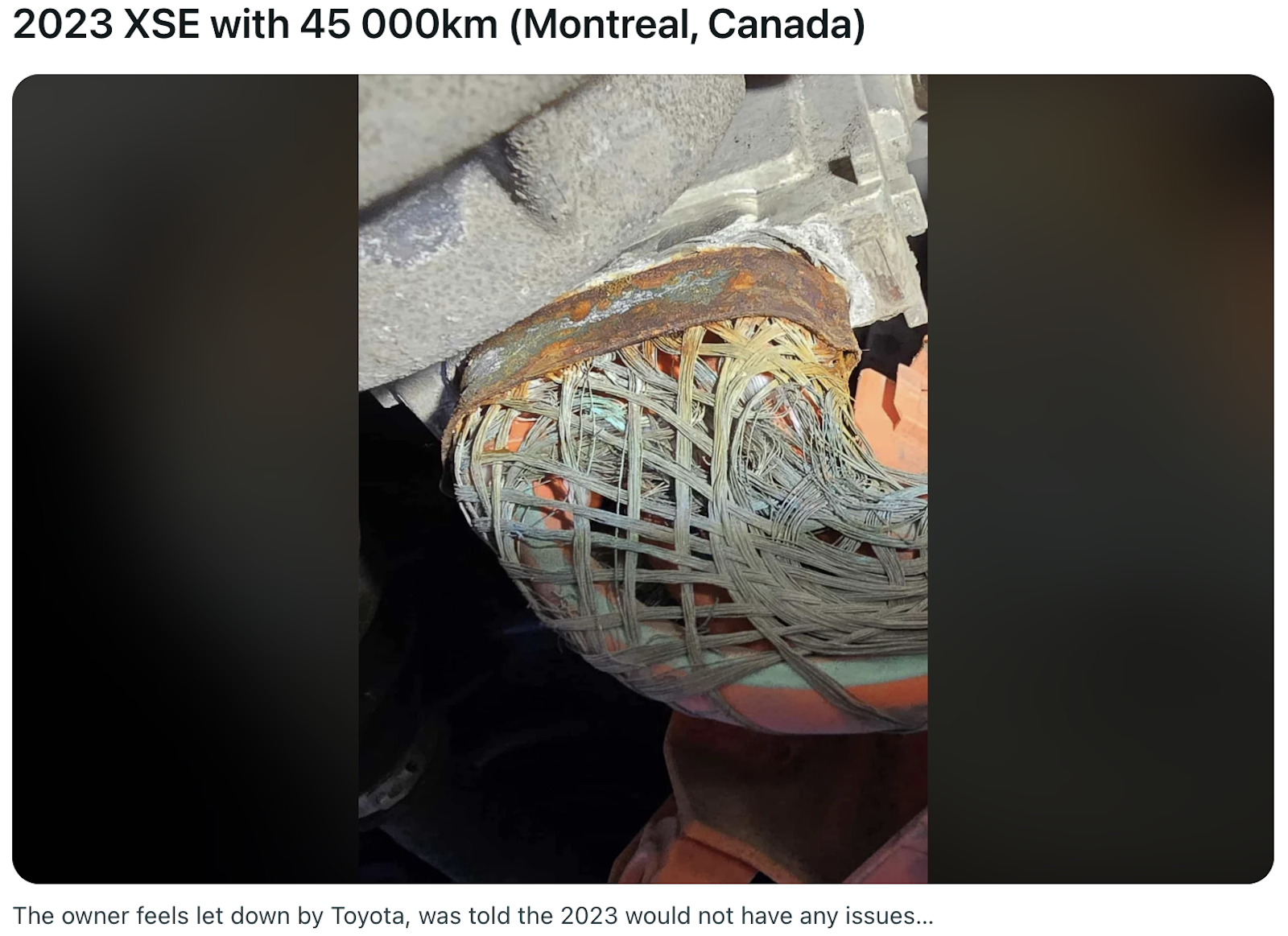
Here’s a Reddit post showing the actual high-voltage cable corrosion seen on a Montreal-based 2023 RAV4 Hybrid XSE. While it’s not catastrophic, it does seem quite advanced for a vehicle with a claimed 45,000 kilometers or 28,000 miles on the clock. As the post states, “The owner feels let down by Toyota, was told the 2023 would not have any issues.” A feeling of disappointment here seems perfectly understandable.
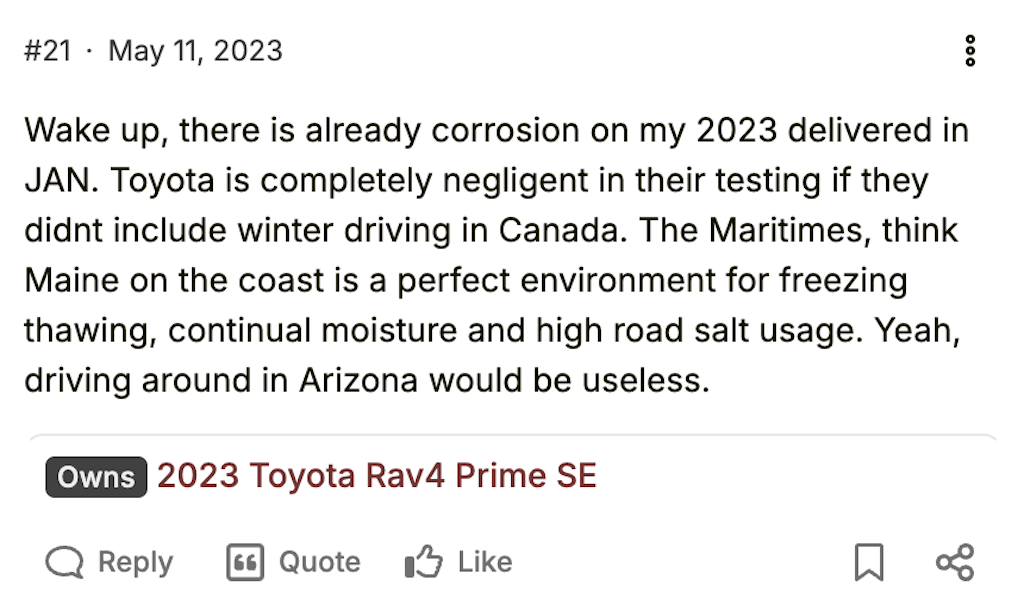
Speaking of understandable emotion, it’s easy to sympathize with this 2023 RAV4 Prime owner on RAV4 World who reports finding corrosion on their high-voltage cable terminals less than six months into ownership. Sure, the phrasing of “Wake up, there is already corrosion on my 2023 delivered in JAN.” sounds a bit irritated, but I’d also be irritated if I had this problem happen to me.
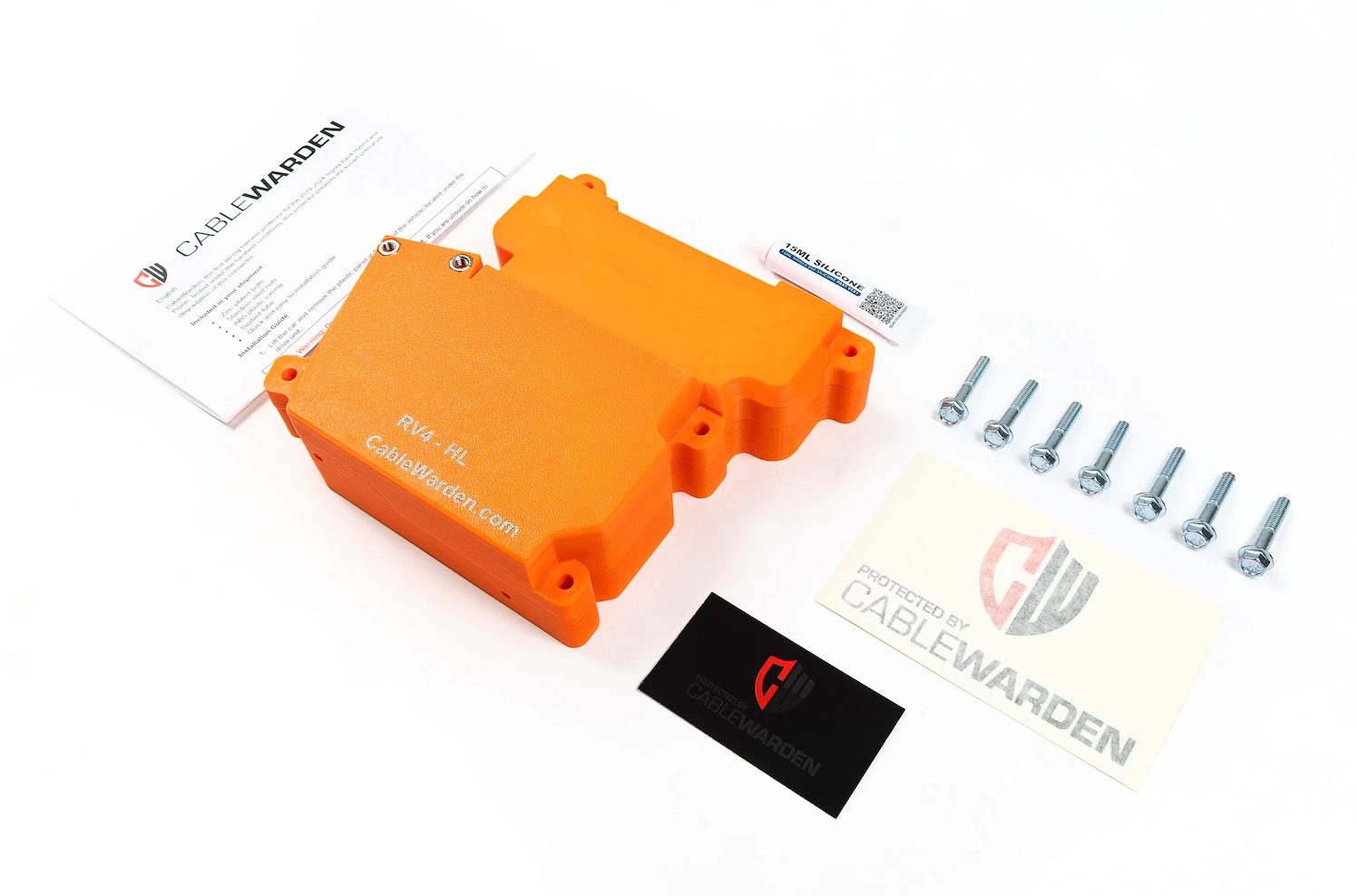
As a result of how widespread this issue is, a cottage industry has sprung up with ways to better protect these high-voltage cable ends from corrosion. The Cable Warden is sold by Quebec hybrid specialists Électr’Auto, a line of screwed-together water-tight boots for these corrosion-prone hybrid system cable ends. The rear kit seems to be the most popular one as those terminals are the ones most exposed on affected cars.

Given the nature of this problem, it’s no surprise that owners have fought back. A Quebec class-action lawsuit was launched in 2023 over high-voltage cable corrosion. As a result of the suit, a nationwide settlement was reached that includes extended warranty coverage for the high-voltage cables on 2019 to 2022 RAV4 Hybrids, 2020 to 2022 Highlander Hybrids, 2021 to 2022 Venzas, RAV4 Primes, and Siennas, and 2022 Lexus NX350h and NX450h+ models. The warranty enhancement program covers those models for up to eight years or 160,000 kilometers, whichever comes first.

Similarly, Toyota has extended the warranty on many affected high-voltage cables in America, but not for most early 2023 models that may retain a problematic connector design, not for most front-wheel-drive models, and not forever. As the official communique for program 22TE09 states, “This coverage will be offered for 8 years or 100,000 miles (whichever comes first).” So, if you have more than 100,000 miles on your affected Toyota hybrid, you’ll be paying for repairs out of pocket, and they can get seriously expensive.
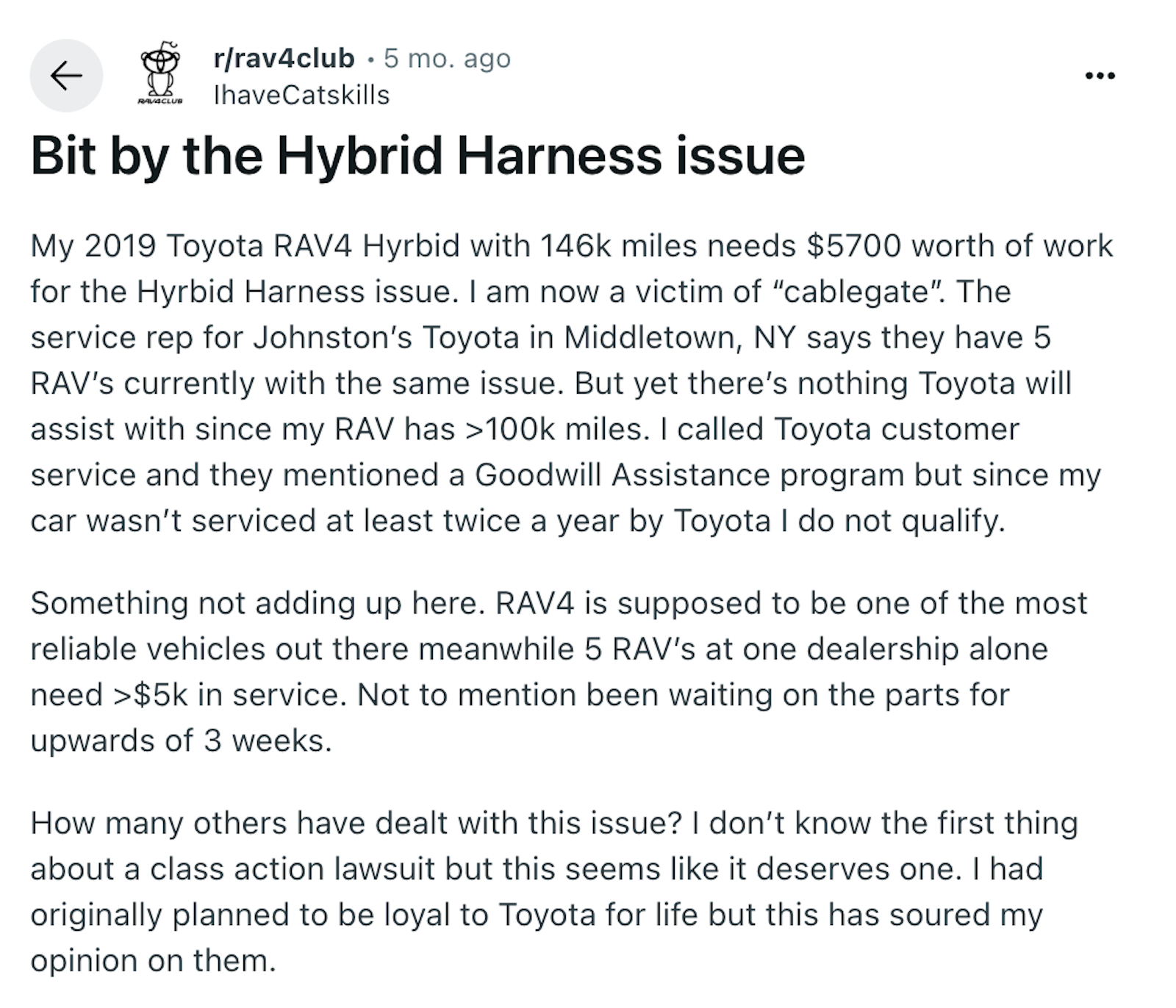
One Reddit user with 146,000 miles on their RAV4 Hybrid reports a repair bill of $5,700, writing that “I don’t know the first thing about a class action lawsuit but this seems like it deserves one,” while noting five other RAV4 Hybrids in for service at their local dealership for the same issue.

Likewise, this 2019 RAV4 Hybrid owner on the RAV4 World forum reports encountering severe cable corrosion with 147,000 miles on the clock. As the owner wrote, “The system crashed last week dealer says high voltage cable needs replacing cost at $5,110.” That’s a big bill for a six-year-old car from a manufacturer with a reputation for reliability.

So, assuming you daily drive an affected Toyota, is there any way to check for signs of high-voltage cable corrosion without crawling under your vehicle? It turns out there might be. Toyota claims that “Excessive corrosion can cause AM Radio Static during certain drive cycles, or the vehicle may not start.” Obviously, not starting is a pretty good sign that something’s wrong, but checking for AM radio static is a great way to pinpoint a problem before you end up needing a tow.
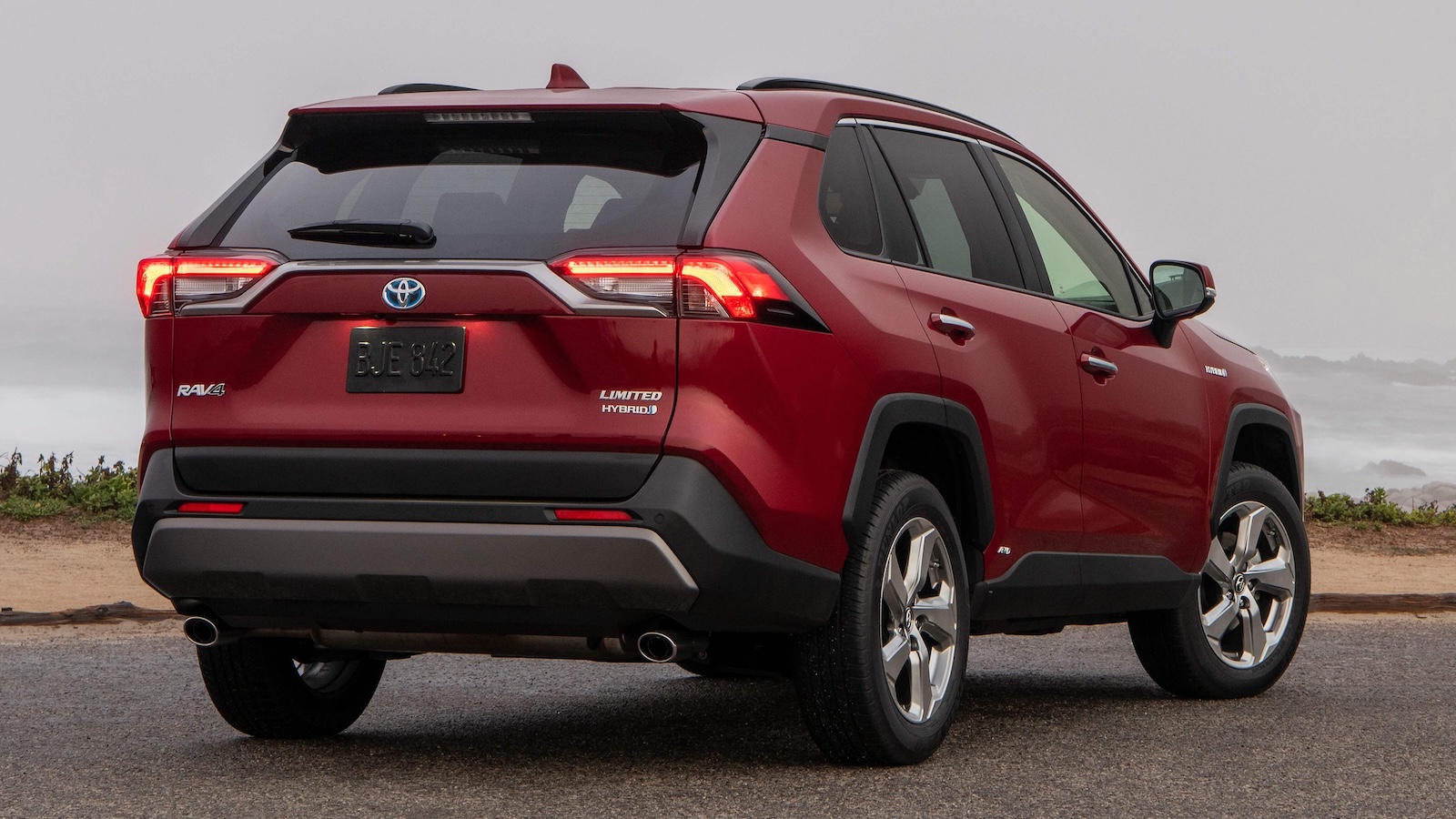
In any case, if you own a RAV4 Hybrid AWD, Highlander Hybrid AWD, RAV4 Prime, Sienna, Venza, or Lexus NX covered under the extended service program or the factory bumper-to-bumper warranty, run the AM radio static test as soon as possible, especially if you live in the rust belt. Depending on your vehicle’s odometer reading, it could be the difference between free high-voltage cable replacement with an updated design and a mid-four-figure repair bill.
Top graphic images: Toyota; Reddit
Support our mission of championing car culture by becoming an Official Autopian Member.

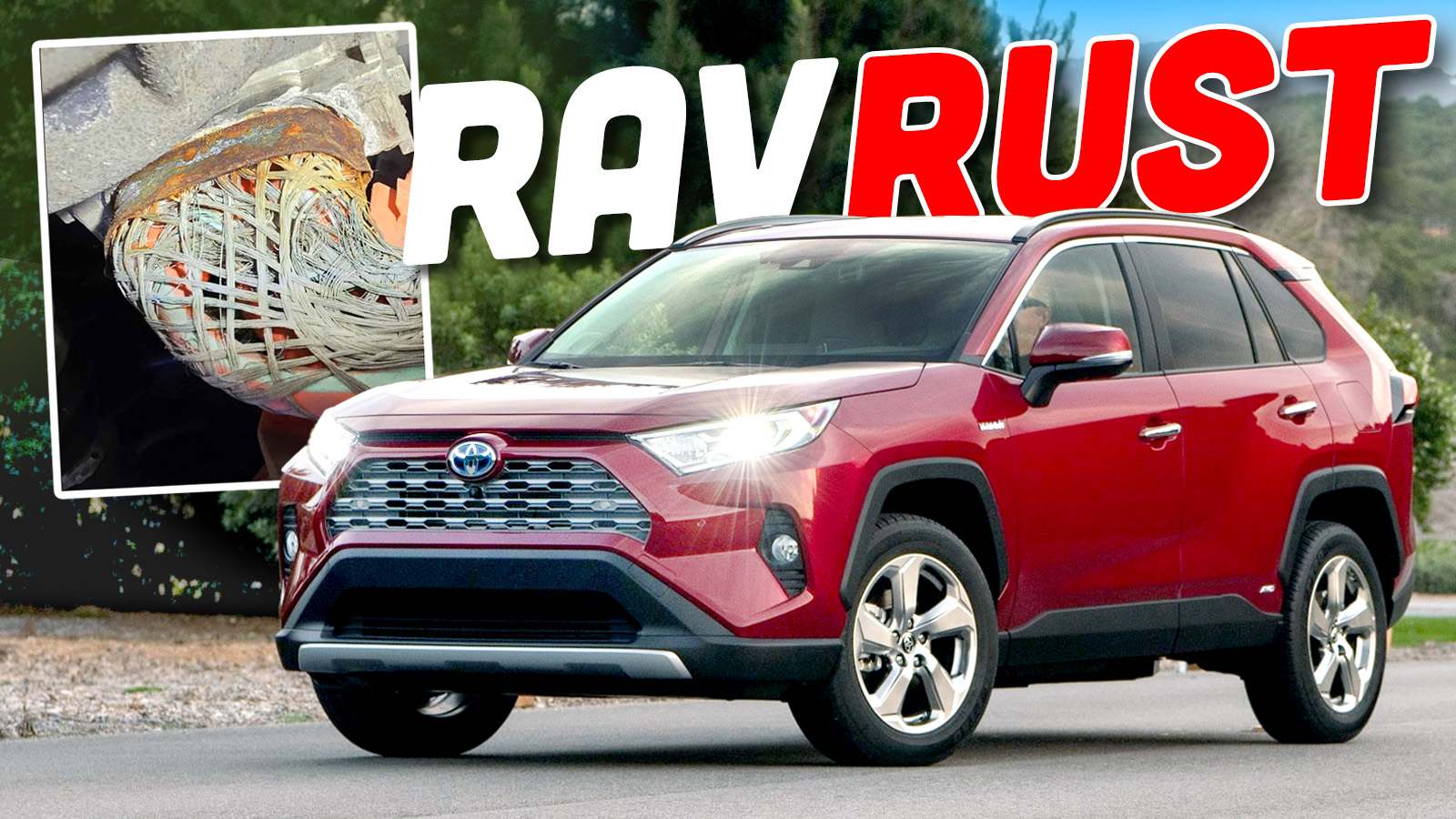






I’ve seen various forums suggest proactively pulling the housing and packing it with dielectric grease. This seems like an easy preventative measure that is holding up well so far for the people who reported back.
Given the sheer number of RAV4’s sold, I am surprised we haven’t seen more aftermarket parts to fix this.
Fortunately we live in the not-salted California foothills, so unlikely anything negative has happened, so I will check this on our 2025 Rav4 when I get back home in a week. It will be interesting to see if Toyota did some additional preventative measures since ours is very new.
We’ve been fixing these ourselves on vehicles in our fleet at work for years now. No need to replace the harness – it’s trivial to disassemble the connector, clean, reassemble, lubricate with dielectric grease. The fault that arises isn’t from a lack of connectivity, it’s for a failed isolation test due to moisture ingress from salt compromising the aluminum housing where the connector seal seals. It’s a 90 minute job to fix. We drill the hole into the connector’s housing to allow moisture to drain. Once packed with grease and the hole drilled, we’ve never had one fail a second time.
That’s the problem when you build something boring, the tolerance for BS is very low.
That connector looks like copper strain relief in a steel sleeve mounted to aluminum. On something that carries a lot of electrical power on the underside of a vehicle exposed to salts and water. WTF. And this really doesn’t seem like a difficult fix to protect it from the elements.
This happened to my wife 2020 XLE Hybrid with 80000km in British Columbia, car wouldn’t start. Cars don’t rust easily around here so that’s pretty wild. She was without a car for a month because of part shortage.
“As the post states, “The owner feels let down by Toyota, was told the 2023 would not have any issues.” A feeling of disappointment here seems perfectly understandable.”
I see what you did there, Thomas.
You would have thought Toyota had learned to adjust their corrosion testing mythology over the Frame debacle of the late 10’s. Well in my head that was a lot more recent than it is. Had to look up the date, FIFTEEN YEARS ago?
People still think of them as a reliable brand and their used products (especially trucks) command an absurd premium, so I think they had the correct takeaway.
Toyota still can’t figure out corrosion. This issue applies to any 4th gen AWD hybrid. Even funnier is 3rd gen Tacoma’s still had frame rot issues after the HUGE issue with the 2nd gens. My 3rd gen Tacoma got recalled and just basically supper poorly undercoated. Yaaaa, a one time coating is totally gonna help when it’s meant to be done annually. The frame looked ROUGH, even though it spent it’s first 3 years in Texas before 3 NY wintersm
Yeah I know they are completely different issues. My point was when something becomes a problem for one thing you should reassess your whole testing methodology to ensure it’s covered in the future, regardless of the platform.
Totally agree. I was just pointing out that not only did they not reassess on that specific platform/chassis/part/area, but they also didn’t seem to on other areas as well.
I’d recommend laying on a good coat of Woolwax every fall.
It works well and smells nice. 50 bucks for a gallon which is enough.
The sprayer they sell works great too and you don’t have to clean it out after an application, the stuff doesn’t harden, throw it in a ziploc bag and store for next year
The last gen Tundras have a “cloth” transmission wire that rusts out and messes up the shifting. Ain’t nothing new with Toyota. Their LOOOVE of rust is something that puts Daves to shame.
I had this done on my wife’s car. 2020 Rav4 hybrid with 80,000km. Was at the dealer for a week because they couldn’t get the part but all fixed now and working well. The repair was covered under the extended warranty so no cost to us.
Symptoms were pretty obvious, random hybrid system malfunction warnings and occasionally it wouldn’t start… cleared the codes and it would be fine again for a while. Didn’t get stranded anywhere thankfully. The final straw was a random system error with a code I couldn’t clear, called the dealer and they said it could randomly shut off and I shouldn’t be driving it, took it in and got confirmed as a cable issue.
These cars are pretty reliable, biggest thing so far has been the cable and replacing the 12v battery as it kept dying on cold mornings (-30c). All good otherwise for nearly 100k now.
A good reason to keep AM around.
Unless the point was to continue a medium known for transmitting a lot of far right hate broadcasts. Note the hypocrisy….they supported AM, but cut NPR.
AM is for emergency contact when your internet and FM are down. This has NOTHING to do with hate speech or NPR. Some people are so full of irrational hatred they can’t even think proper anymore.
We found the Trump voter.
To be fair to Greg, AM is rediculously good at being an emergency broadcast. Those signals at night travel hundreds of miles. I used to listen to twilight zone episodes off Denver’s 850 KOA… From Nevada.
Long-range AM radio reception on clear channels at night can be amazing – it was normal to get Casper, Wyoming in the SF Bay Area when I was a kid. Amateur radio is much more useful (and not difficult to get into), as are locally owned, independent AM or FM stations. The problem is that most radio stations are part of national companies (BOB FM, for example, is computer-operated, with no local personnel at all!). Most of AM is now right-wing crap, with each host repeating the same twisted logic and talking about the same issues, following their marching orders for the day.
Radio is extremely important – consider how the Chinese have hacked the water systems, electrical grids, internet providers, government networks, banks, airports, and so on – they could disable everything and create havoc throughout the country, and unprepared Americans would be wondering why their cell phones weren’t providing all the answers via TikTok.
I could pick up KMOX in Charlotte, NC years ago. I love hockey and most teams broadcast on AM years ago, so you could hear games from Detroit, Chicago, St. Louis, Pittsburgh, and New York, all in the Carolinas.
Streaming online offers far better quality now, but back in the 90s, I was just happy as hell to hear any hockey broadcast.
Ugg conglomerates, ruining AM & FM radio, TV. I absolutely avoid syndicated national programs.
There is hope, If you look hard enough some stations are still locally owned and operated and others run small time programs on the weekend. There is an excellent program in Vegas called “breaking bread with Bono” it’s just them talking about old Vegas and history.
Toyota, you’re breaking my heart!
Seriously, I would point myself towards a Honda or Mazda(I did this one), right now. I’m hopeful it’s just a run of bad luck, but there are too many Toyota problems popping up these days that it makes me fear they’re starting to trade on their reputation without bothering to do the things that gave them that rep in the first place.
Toyoda was shamed and forced out. They now are trash. The turnover in their engineering and average tenure etc… is way down. Their recalls and trash motors is way up. Reliability is not for Toyota anymore, they are basically turning into a VC run business culture and its sickening.
Hiring a lot of US MBA types, same problem that plagued the Big 3. Honda US similar issue to a lesser degree.
Oof. That’s absolutely terrible news.
When I first read this I thought he was calling out Jan from the ads. 😀
German car repair bills? On my Toyota?
It’s more likely than you think.
Axis powers, unite!
If we’re going with Axis Powers we have to throw the Italians in too – “Italian reliability coupled with German repair bills on my Japanese car?” Can’t wait to see what my new Camry throws at me over the next decade!
Double check emissions warranty laws too. This may be covered under state emissions laws depending on whether the cable is an emissions component. Those are generally for longer than most other warranties.
7 years/70k miles in California for general emissions equipment. 15 years/150K miles for some PZEV vehicles. We’ve got your back.